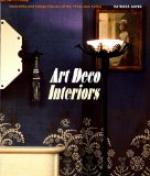Some of the Jacobean cabinets had panels of ebony, the other parts inlaid with mother-of-pearl and ivory.
The silver Jacobean furniture is interesting and the best examples of this type are said to be those belonging to Lord Sackville. They are of ebony with silver mountings.
Yorkshire is noted for its Jacobean furniture, but some famous rooms done in this style are at Langleys, in Essex, the seat of Col. Tufnell, where the ceilings and mantels are especially fine and the library boasts interesting panelled walls, once enlivened by stained glass windows, when this room was used as a private chapel for the family.
Jacobean carving was never ornate.
Twenty years later came the Queen Anne period. Queen Anne chairs show a solid splat, sometimes vase-shaped, and strap-work arabesques. Most of the legs were cabriole, instead of the twisted turnings (on Stuart lines) which had been Supports for chairs, cabinets and tables. The Queen Anne chair legs terminated when cabriole, in claws and balls or simple balls. Settees for two were then called “love seats,” and “pole-screens” belonged to this period, tall, slender poles with small, sliding screens.
Queen Anne hangings were of rich damasks, silks and velvets, and the wainscot of rooms was painted some pale colour as an effective background to set off the dark, turned walnut or gorgeous lacquer made in red, green or black, and ornamented with gold. Some of the Queen Anne pieces of this variety had hinges and lockplates of chased brass. Another variety was of oak, veneered with walnut and inlaid.
The very high ceilings of the Queen Anne period led to the use of “tall boys” or family bureaus, those many-storied conveniences which comprised a book-case above, writing desk in the middle, and drawers below.
Lockwood says in giving the history of chairs, in his “Cabinet Makers from 1750 to 1840”: “Extravagance of taste and fluctuation of fashion had reached high water mark due to increase of wealth in England and her colonies. From the plain, stately pieces of Queen Anne the public turned to the rococo French designs of early Chippendale, then tiring of that, veered back to classic lines, as done by the Adam brothers, and so on, from heavy Chippendale to the overlight and perishable Heppelwhite. Then public taste turned to the gaudily painted Sheraton and finally, took to copying the French Empire.”
The American Revolutionary War stopped the exportation of furniture to America, with the result that cabinet-makers in the United States copied Chippendale and neglected all other later artists. When America began again to import models, Sheraton was an established and not a transitional type. Beautiful specimens are shown in the Nichols house, at Salem, Mass., furnished in 1783. The furniture used by George Washington when President of the United States in 1789, and now in the City Hall, New York, is pure Sheraton. (See Colonial Furniture, Luke Vincent Lockwood.)




